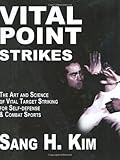By Steve Holland and Warren Strobel
WASHINGTON (Reuters) - President Barack Obama signaled on Tuesday he is no rush to respond quickly to Syria's apparent use of chemical weapons, taking a cautious approach to the country's civil war, mirroring the views of the American public, most lawmakers and some U.S. allies.
Obama, who last year declared that the use or deployment of chemical weapons by Syrian President Bashar al-Assad would cross a "red line," told a White House news conference there was evidence those weapons were used, but there was still much that U.S. intelligence agencies did not know.
"We don't know how they were used, when they were used, who used them," he said, and, "We don't have a chain of custody that establishes what exactly happened."
Obama did not rule out action - military or otherwise - against Assad's government. But he repeatedly stressed he would not allow himself to be pressured prematurely into deeper intervention in Syria's two-year-long civil war.
The president's remarks raised the prospect that, despite declaring last week that there was evidence Assad's forces had used the nerve agent sarin "on a small scale," any U.S. government response will not be quick.
Obama's press secretary Jay Carney told reporters on Monday that there was no deadline for rendering a final judgment on whether chemical weapons were used, and by whom. "I would not give you a timetable," Carney said.
Privately, U.S. officials predict it will be weeks before any conclusion is reached.
Syria denies using chemical weapons.
BLOOD SAMPLES
Obama administration officials have not specified what "physiological" evidence they have that Syrian forces used sarin, but U.S. government sources said it included samples of blood from alleged victims, and of soil.
"My understanding of the situation is that the various intelligence agencies are quite confident that human beings were exposed to sarin, and that's based on physical samples and chemical analysis of blood from the victims," said Gary Samore, a former Obama nonproliferation adviser who is now at Harvard University.
Samore said there appeared to be "a question mark" about whether local military commanders used the weapons "or whether this came down from orders from Damascus to test how much they could get away with."
Since the Syrian conflict erupted in 2011 - it has killed 70,000 people and created more than 1.2 million refugees - Obama has repeatedly shied away from deep U.S. involvement.
That stance is shared by top Pentagon officials, who have spoken publicly and privately of their concerns about the limits and risks of employing U.S. military force in the shattered country.
Whether Obama is now slowly moving toward a more activist approach is unclear.
Obama, without being specific, said that if Syria's chemical weapons use was more firmly established "that means that there are some options that we might not otherwise exercise that we would strongly consider."
White House spokeswoman Caitlin Hayden said "our assistance to the Syrian opposition has been on an upward trajectory, and (Obama) has directed his national security team to identify additional measures so that we can continue to increase our assistance."
Obama has approved nonlethal aid to the Syrian opposition, but has thus far stopped short of providing arms.
He now faces criticism for softening a "red line" that seemed crystal clear when he said in August that the use of chemical weapons by Assad, or transfer of stockpiles to extremist groups would be unacceptable.
White House officials said they do not think the U.S. public is eager to get involved militarily in Syria.
"Setting aside instances when America has been attacked - the Japanese and al Qaeda - military action should always be something any president considers very seriously and deliberately and that's especially the case when it's not an attack on the United States," a senior White House official said.
A New York Times/CBS News poll released on Tuesday found that 62 percent of Americans believe the United States has no responsibility to do something about the fighting between Assad's forces and anti-government rebels.
Only 39 percent of respondents said they were following the Syrian violence closely, indicating that it is not among U.S. citizens' top concerns.
"I think the American people are kind of where the president is. You've got to have some definitive evidence and you've got to very careful about what you do," said Democratic strategist Bob Shrum, who managed John Kerry's 2004 presidential campaign.
"The politics of this is not hard for the president. It's the policy that's hard," Shrum said.
ROOM FOR MANEUVER
Obama also has room for maneuver on Syria because Republican are divided over what to do, and - unlike with Iran's nuclear program - close U.S. Middle East ally Israel is not urging American action.
Hawkish Republican senators John McCain of Arizona and Lindsey Graham of South Carolina, said Obama's inaction was endangering U.S. national security interests and allies.
"There are many options at our disposal, including military options short of boots on the ground in Syria, that can make a positive impact on this crisis," they said in a statement responding to Obama's remarks.
But not all Republicans share that view. Departing from his party's frequent disparagement of the United Nations, Representative Harold Rogers of Kentucky replied when asked if Washington should arm the Syrian rebels: "It is such a muddled picture. I think probably we ought to be asking the U.N. to be involved."
The Republican divide "leads to an incoherent critique of the administration's policy," said Jon Alterman, director of the Middle East program at the Center for Strategic and International Studies think tank.
There is also "the long hang-over from Iraq" and the U.S. war there, Alterman said. "I don't know when that goes away."
Michael Oren, Israel's ambassador to the United States, said his country is not calling on Obama to act against Syria.
"We're not making any policy recommendations," Oren said in a telephone interview. "We think the issue is very complex."
At his news conference, Obama stressed the need for international consensus. Secretary of State John Kerry travels to Russia, which has backed Assad, for talks on Syria and other issues next week.
"If we end up rushing to judgment without hard, effective evidence, then we can find ourselves in the position where we can't mobilize the international community to support what we do," Obama said.
Said Alterman: "Obama is looking for an opportunity to be decisive" in Syria. "You could either see it as reluctance, or patience."
(Additional reporting by Patricia Zengerle, Mark Hosenball and Tabassum Zakaria; Editing by Alistair Bell and David Brunnstrom)
Source: http://news.yahoo.com/obama-evidence-chemical-weapons-used-syria-questions-remain-151021291.html
kobe bryant tiger woods adam scott Chi Cheng xbox live aurora borealis Psy



